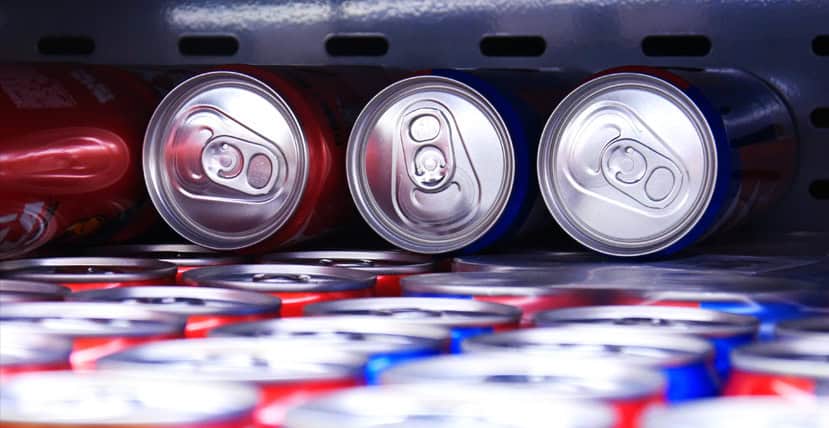Every month, Erise’s trademark attorneys review the latest developments at the U.S. Patent and Trademark Office, in the courts, and across the corporate world to bring you the stories that you should know about:
9th Cir. Upholds Injunction in OpenAI v. Open AI
The U.S. Court of Appeals for the Ninth Circuit recently upheld a preliminary injunction against Open Artificial Intelligence, Inc. (OAI) and its president Guy Ravine in a trademark infringement matter brought by OpenAI, Inc. over the use of “Open AI.”
The case highlights questions about descriptiveness and demonstrating priority of trademark rights against a second user.
On December 11, 2015, OpenAI announced its founding, including a commitment of $1 billion of funding from high-profile tech investors like OpenAI co-founders Sam Altman and Greg Brockman, as well as Elon Musk and Peter Thiel.
The same day, Ravine filed an application with the USPTO to register OPEN AI (two words) for “Providing a web site featuring technology that enables internet users to share documents, images and videos.” The application alleged a date of first use in commerce of March 25, 2015, which also appears to be the day after Ravine purchased the domain open.ai.
During the examination, the USPTO questioned the proof of use Ravine filed in support of the application and he filed a substitute. The application also was amended to the Supplemental Register in response to an objection that the mark is merely descriptive of the services. The Supplemental Register provides more limited protections than registration on the USPTO’s Principal Register. Ravine’s registration issued August 21, 2017. In July 2023, Ravine filed an assignment to OAI.
On September 21, 2016, OpenAI filed an application to register OpenAI (one word) for “computer software for artificial intelligence.” The application claimed use in commerce April 27, 2016, but was eventually abandoned for failure to respond to an office action including a refusal on the ground that the mark merely describes the goods and also citing Ravine’s application.
Since then, OpenAI has filed additional applications, including for OPENAI in Classes 9 and 42 in January 2022 and in Classes 38 and 45 in May 2023. Ravine filed a letter of protest with the USPTO challenging the earlier application. Those applications are currently suspended pending the pending lawsuit.
In August 2023, OpenAI filed the trademark infringement complaint against OAI and Ravine in the U.S. District Court for the Northern District of California. The following month, OpenAI filed a request for a preliminary injunction.
In February 2024, the district court granted a preliminary injunction prohibiting OAI and Ravine from using “Open AI” or any “colorable imitation” or representing that OAI and Ravine’s Open AI are connected with OpenAI. For purposes of the injunction, the district court held that OpenAI used its mark before OAI’s use and that by September 2022, the mark was “at least suggestive.” A mark that suggests the nature of the goods or services is stronger than a mark merely describing the goods/services.
On appeal, the Ninth Circuit credited the district court’s finding that OpenAI likely acquired secondary meaning in its mark by September 2022, when there were more than 1.5 million users of the company’s DALL-E text-to-image generator and another million had registered for early access to DALL-E 2. The court discounted evidence of OAI’s use.
While the appeal of the injunction was pending, Ravine/OAI filed a counterclaim alleging that OpenAI founders Altman and Brockman met with Ravine and “stole the foundational principles of Open AI from Ravine…”. This is certainly not the first dispute of the origination of a new product or technology, but it is a very visible reminder of the importance of careful trademark selection and filing an application as soon as possible.
USPTO Audit Practice Modified to Target Questionable Specimens
The USPTO recently announced that it will change the process for selecting trademark specimens for audit. Effective October 25, 2024, the office is examining post-registration specimens with specific attention to those that call into question whether the mark actually is in use.
Under a final rule implemented in 2017, the USPTO randomly audited specimens of use filed with declarations/affidavits of continued use under Trademark Act Sections 8 and 71. These are the examples of current use of the mark that registration owners file in order to maintain their registrations. The new Federal Register policy update states that “the USPTO is adding additional directed audits to its practice.”
“Since the final rule was adopted in 2017, the USPTO has become aware of circumstances in which the accuracy and integrity of the trademark register would benefit from directed audits in addition to the current practice of random audits,” the policy update notes. “Specifically, the USPTO discovered systemic efforts to subvert the requirements for use in commerce of a mark to support registration.”
The update pointed to an increasing awareness of digitally-created specimens. Further, the update cited post-registration procedures examining use that were implemented 2021 under the Trademark Modernization Act. These brought to the USPTO’s attention “[c]ertain disturbing trends … such as the use of specimen farms” that provide applicants with platforms to display products that are not actually sold.
The new practice is open for public comment until November 27, 2024. After consideration of any comments, the USPTO will publish information about the program at the Post Registration Audit Program web page.
The USPTO stated that the new practice is part of the effort to ensure that trademark registrations, which provide notice to the public of companies’ trademark rights, accurately reflect current use of registered marks. This, in turn, helps avoid the “needless costs and burdens” to others adopting new marks, like investigation into actual use and efforts to avoid conflicts with the registered mark when it is not actually in use.
Other Marks in the News
- Minnesota firm sues Logan Paul’s Prime brand for trademark infringement: X Hydration says the Prime X Hydration drinks are causing “consumer confusion.” (Minnesota Star Tribune)
- KFC sues Church’s Texas Chicken for infringement over ‘Original Recipe’ (Nation’s Restaurant News)
- Unsealed Filings Show StockX Pushback Against Nike’s NFT Lawsuit (The Fashion Law)


